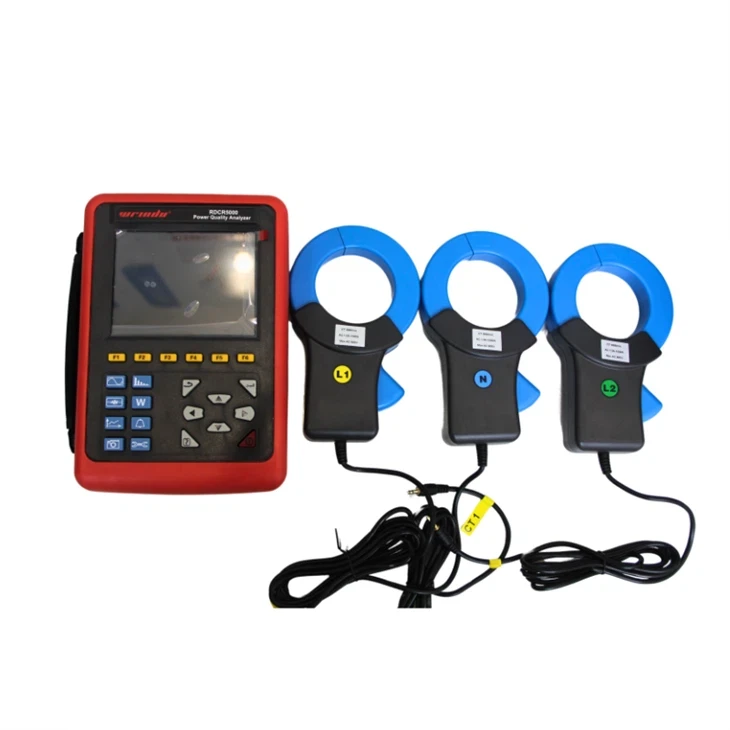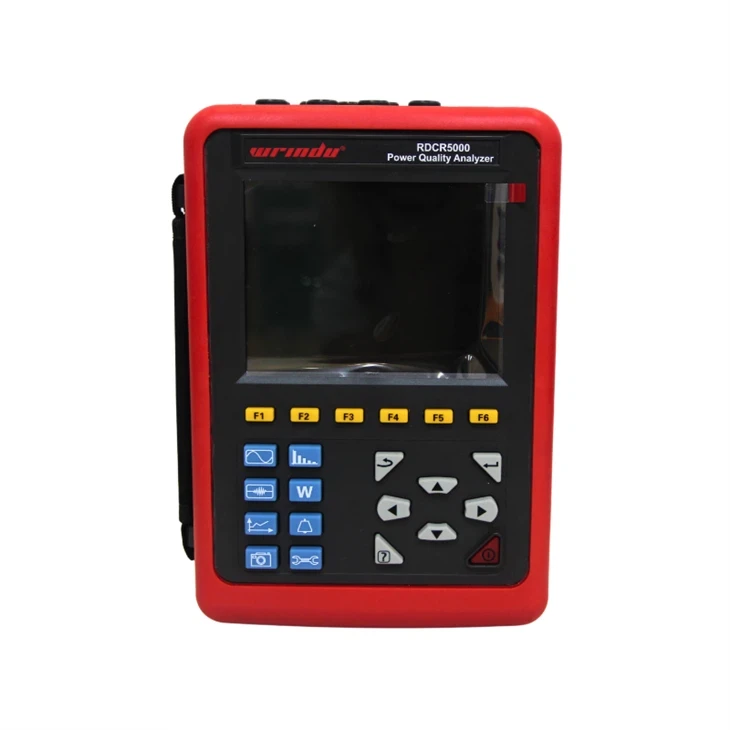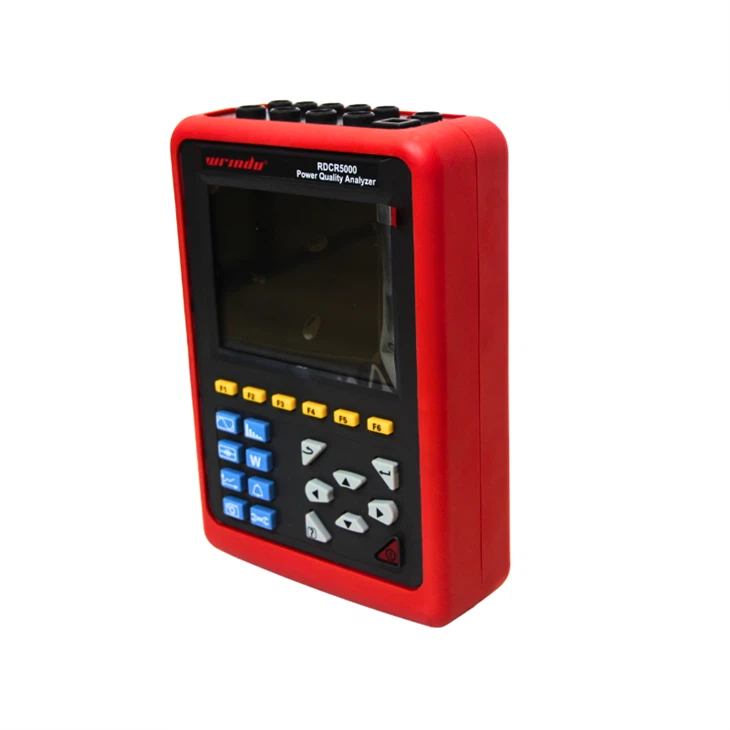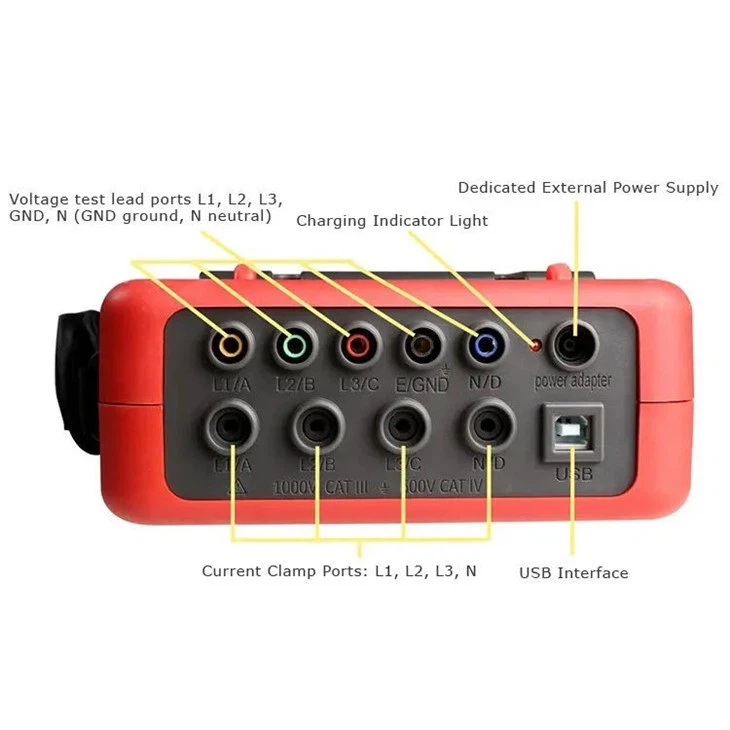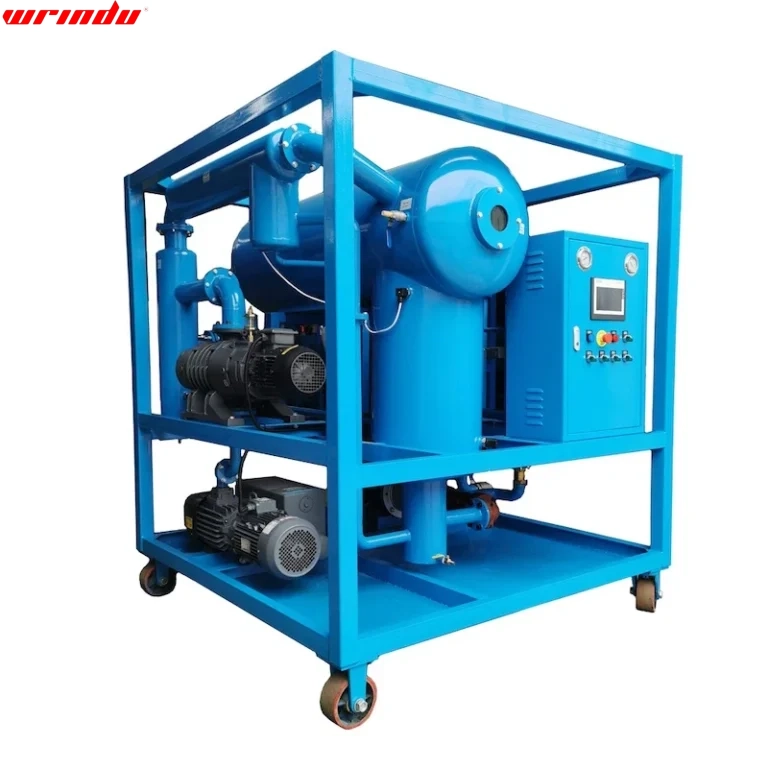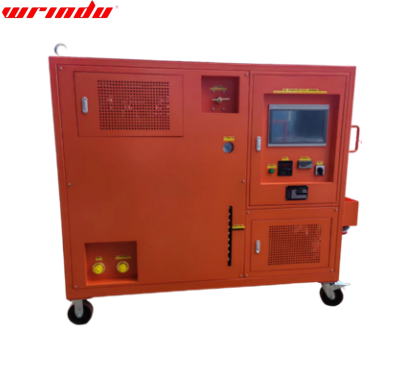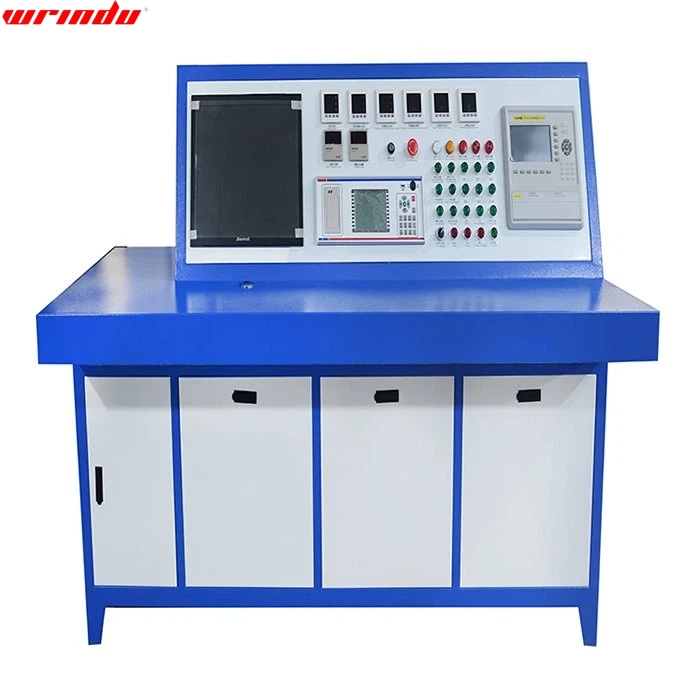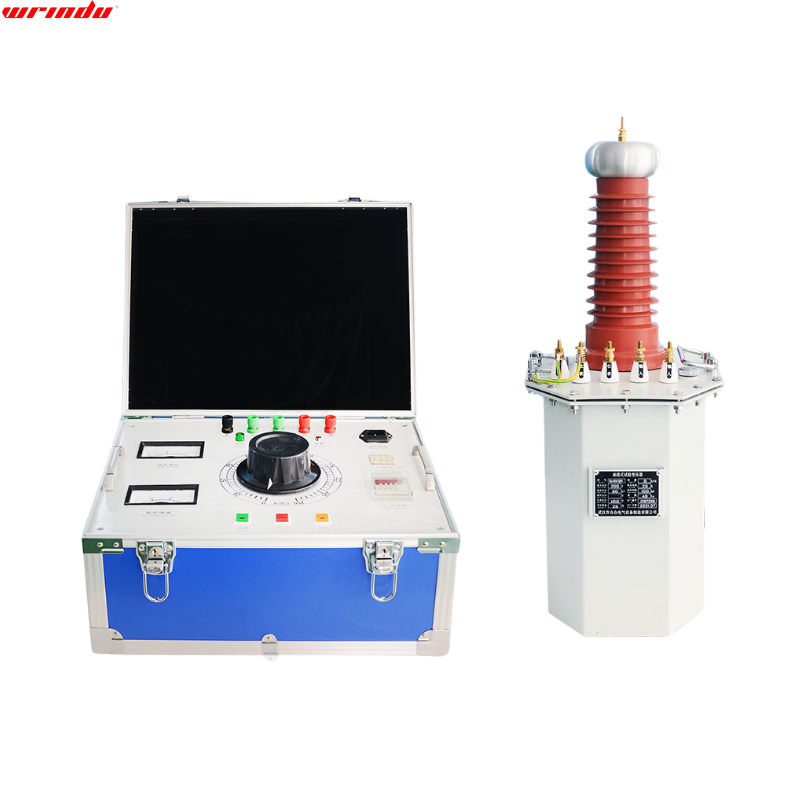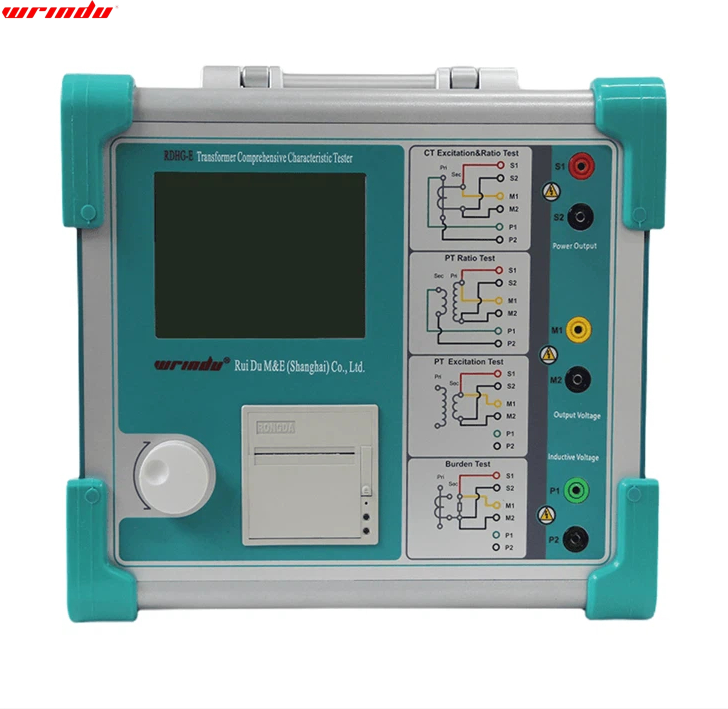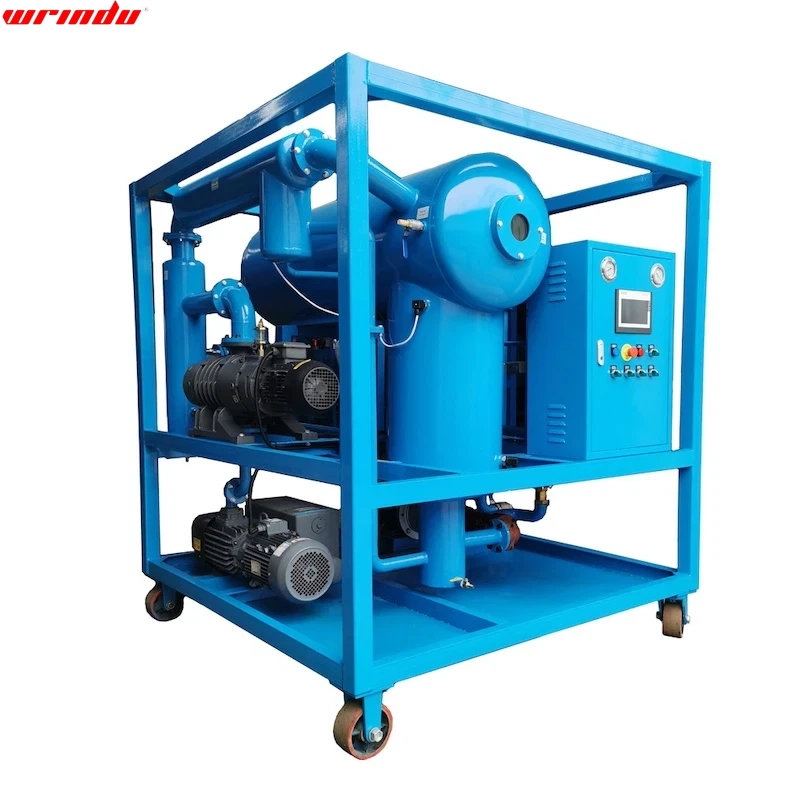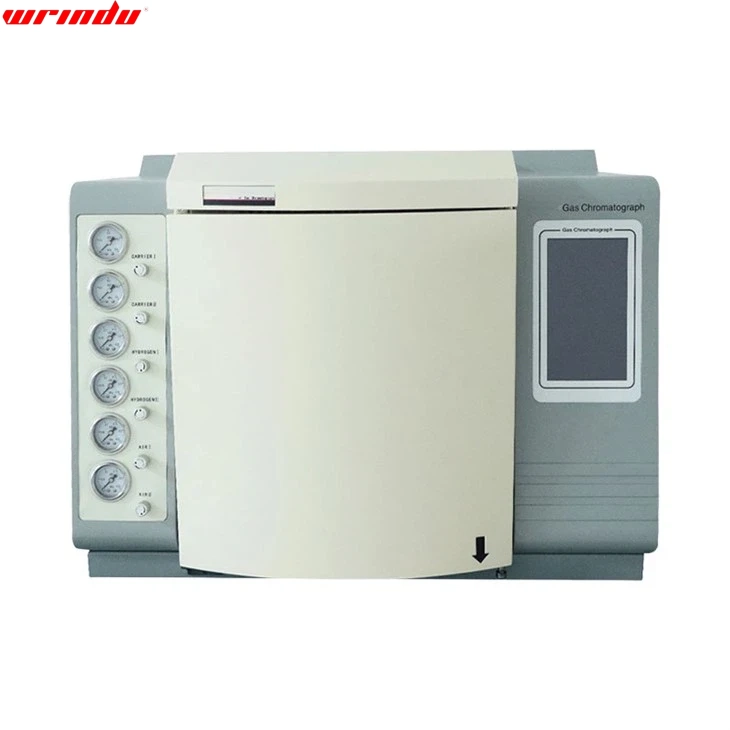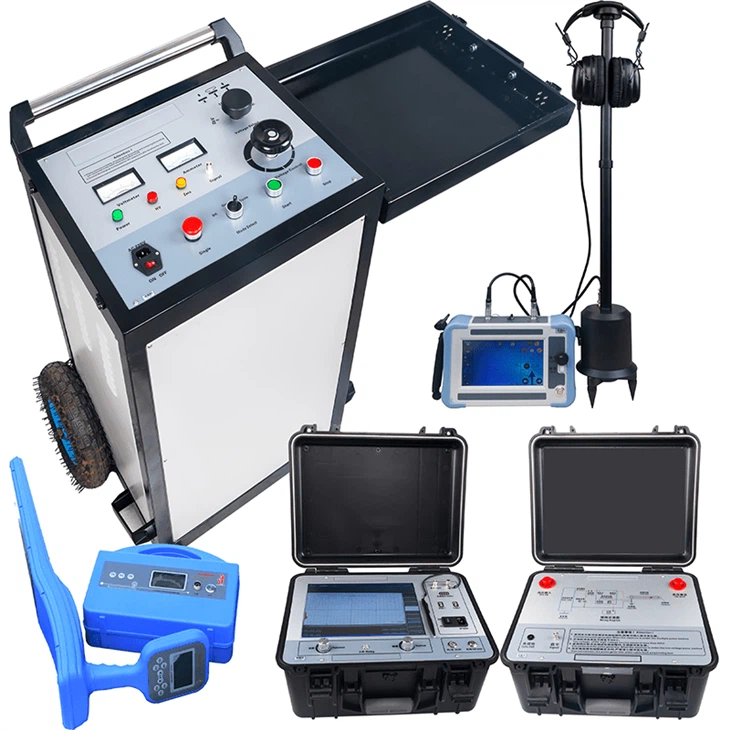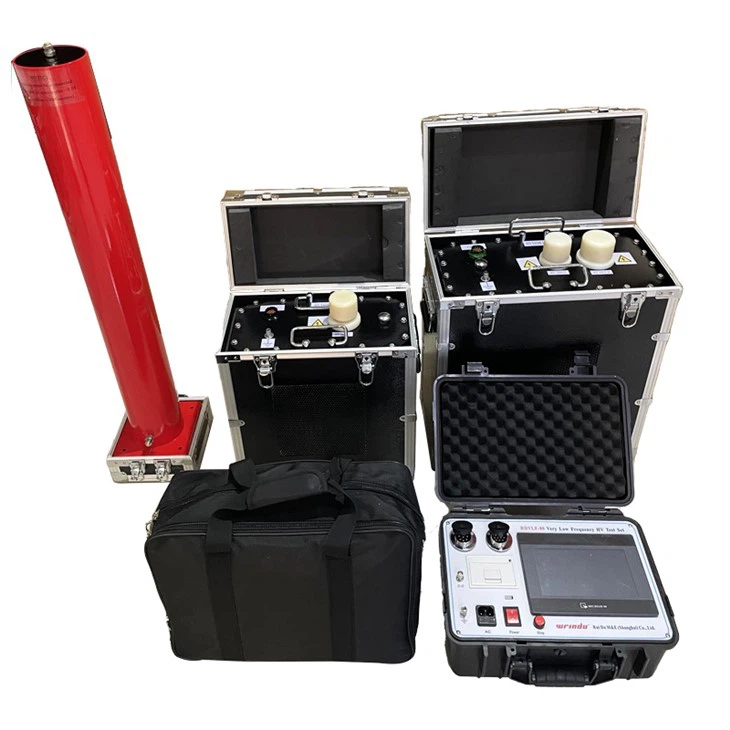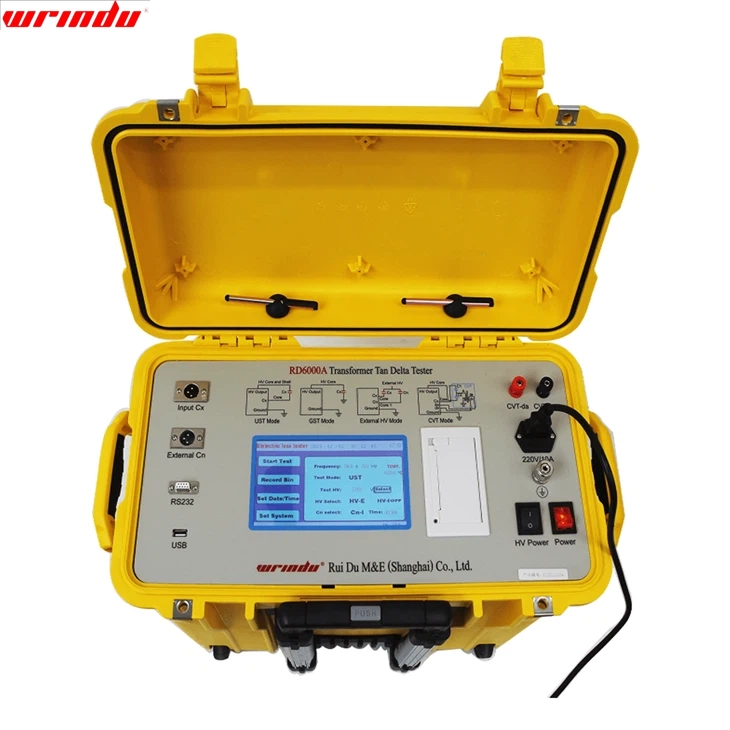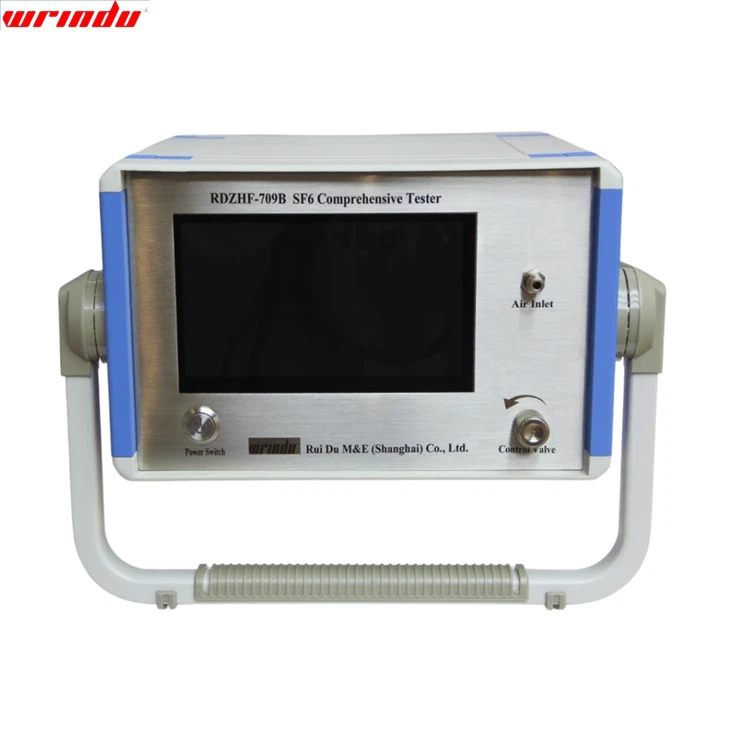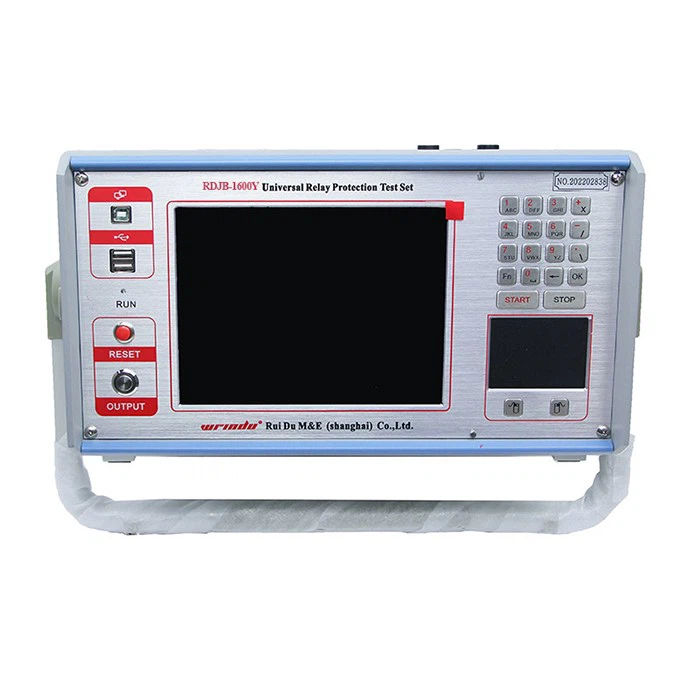| Function |
Description |
| Power supply |
Rechargeable lithium-ion battery packs 9.6V, backup charger. |
| Battery Level indicator |
Battery symbol 5 grid  Display power, when the battery level is low, automatically shut down after a 1-minute indication Display power, when the battery level is low, automatically shut down after a 1-minute indication |
| Working Current |
about 590mA, continuous working 8hours. |
| Display mode |
LCD color screen, 640×480, 5.6 inches, display field 116mm × 88mm |
| Instrument Size |
240mm×170mm×68 mm. |
| CT Size |
008B small sharp current clamp: 7.5mm×13mm; (optional)
040B round jaw current clamp: 35mm×40mm; (optional)
068B round jaw current clamp: 68mm×68mm. (optional)
300F Flexible Coil Current Sensor (with Integrator): Ф300mm (optional) |
| Number of channels |
4 voltages, 4 currents |
| Line Voltage |
1.0V~2000V. |
| Phase Voltage |
1.0V~1000V. |
| Current |
008B small sharp current clamp: 10mA~10.0A; (optional)
040B round jaw current clamp: 0.10A~100A; (optional)
068B round jaw current clamp: 1.0A~1000A; (optional)
300F Flexible Coil Current Sensor (with Integrator): 10A ~ 6000A (optional) |
| Frequency |
40Hz~70Hz. |
| Electricity Energy Parameter |
W, VA, Var, PF, DPF, cosφ, tanφ. |
| Energy parameters |
Wh, Varh, Vah. |
| Harmonic Wave |
Yes, 0 – 50 times |
| Total harmonic distortion |
Yes, 0 – 50 times, each phase |
| Expert Mode |
Yes. |
| Transient Record Groups |
150 groups |
| Voltage Flicker |
Yes |
| Start Current Mode |
Yes, 100 seconds |
| Three-phases Unbalance |
Yes |
| Record |
300 days (record 20 parameters simultaneously, every 5 seconds record 1 point) |
| Min/Max Recorded Value |
Yes, the max-min value can be measured for a certain time |
| Alarm |
40 different types of parameter selection, 12800 group alarm logs |
| Peak |
Yes. |
| Phasor Diagram Display |
Automatic |
| Screenshot Capacity |
60PCS |
| Menu language |
English/Chinese. |
| Communication Interface |
USB. |
| Automatic Shut Down |
In the alarm/trend graph recording/transient capture mode (waiting or in progress), the instrument does not automatically shut down |
| In other test modes, there is no button operation within 15 minutes, prompting to automatically shut down after 1 minute. |
| Backlight Function |
Yes, it is suitable for dark places and nighttime use |
| Instrument Weight |
Host: 1.6kg (with battery). |
| 008B small sharp current clamp: 170g×4; (optional) |
| 040B round jaw current clamp: 190g×4; (optional) |
| 068B round jaw current clamp: 510g×4; (optional) |
| 300F Flexible Coil Current Sensor (with Integrator): 330g×4; (optional) |
| Test wires and power adapter: 900g; |
| Total weight: about 9.2kg (with package). |
| Voltage Test Wire Length |
3m |
| Current Clamp Wire Length |
2m |
| Working Temperature |
-10°C~40°C; below 80%Rh. |
| Storage Temperature |
-10°C~60°C; below 70%Rh. |
| Input Impedance |
Test voltage input impedance: 1MΩ |
| Withstand voltage |
Withstand the sine wave AC voltage of 3700V/50Hz one minute between the instrument line and out shell |
| Insulation |
Between instrument line and shell ≥10MΩ. |
| Structure |
Double insulation, with insulation shock-proof sheath. |
| SuitableSafely Standard |
IEC 61010 1000V Cat III / 600V CAT IV, IEC61010-031, IEC61326, Pollution degree: 2. |





